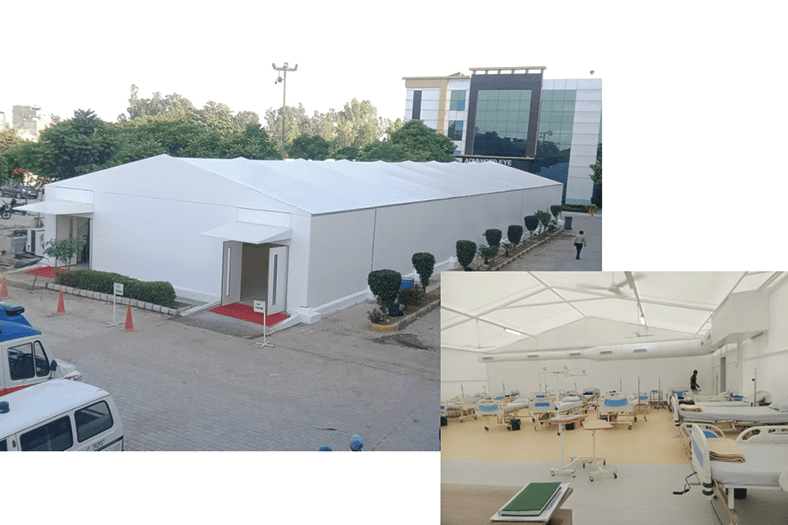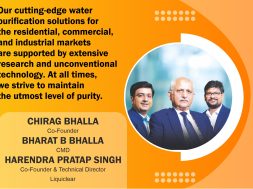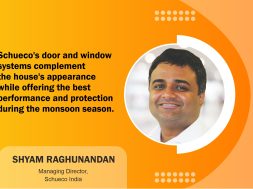Lightweight tensile structures are a boon for the aviation sector

Textile structures with membranes provide for a sustainable, lightweight concept with enormously reduced input of primary and secondary energy. Besides that, tensile structures are head turners and give the roofs of airports a sense of place”, says Katja Bernert, Dipl.-Ing. Architect, Mehler Texnologies, Germany.

What is the advantage offered by tensile structure vis à-vis conventional roofing?
Tensile structures are a lightweight construction method. It’s a boon for sectors like aviation where the construction methods tether on to the idea of ‘the lighter the better’. Conventional roofing needs more sub construction, is much heavier itself and needs considerable foundations. This entails a large carbon footprint within production processes, for transportation and installation. Textile structures with membranes on the other hand provide for a sustainable, lightweight concept with enormously reduced input of primary and secondary energy, a far smaller effort for installation and in conclusion significantly reduced quantities for recycling at the end of a very long-life cycle. These are only the advantages when looking at aspects of sustainability. When it comes to visual effects, it is clear enough that tensile structures are head turners and give the roofs of airports a sense of place. Passengers will certainly remember a beautiful textile roof much more easily than the repeating cover in aluminium for example.
How can one make the right selection of fabric for the tensile structures? What points are to be kept in mind With the help of the experts at Mehler Texnologies it is easy to make the right choices. It is obvious that there are many different sorts of fabrics and foils, many different base fabrics and coatings. Textile architecture
experts are happy to advise you on the different options. Every structure needs to be looked at individually and it is important to keep in mind that experts are there to help you find it. Some of the key features when it comes to tensile structures is translucency and cleanability Mehler Texnologies’ vast portfolio includes membranes with an extremely high translucency. For efficient cleanability, Mehler Texnologies offers the Nano lacquer as a top finish. This ensures that dirt and dust do not stick to the fabric and can be washed off easily. Sometimes a heavy rain is enough for a bright new shine on the roof!

What are the factors which influence or determine the cost of the tensile structure?
Tensile structures are apt to cover vast spaces with a considerably small amount of material. That’s the most obvious saving. Looking at the carbon footprint of building in general another important saving factor becomes more and more evident. Our standard construction methods with concrete etc. make up for around 40% of global CO2 emissions. It should be our aim to reduce this figure significantly. Lightweight structures with membranes are an important means to do so. When it comes to the overall costs it’s definitely not the fabric which is the cost driver. Vinyl- coated polyester fabrics as in Mehler Texnologies’ portfolio cost a fraction of standard roofing materials. Saving on the material itself allows for spending more money on the engineering and hence optimization of the structure. It is important to state once more that there are experts in tensile architecture who can offer sound consultation and advice on the different options available.
What degree of design variation can be achieved in a Tensile structure especially when it is used for larger properties? Design options in textile architecture are more or less unlimited. The sky’s the limit. Here again what we do is very similar to aviation. The most straightforward use for fabrics in large constructions are pneumatic constructions for hangars etc. Air supported systems with our membrane for the cushions do not need any further sub construction and can be installed quickly and easily even in the most remote places. As far as pre-tensioned constructions for passenger terminals are concerned, there are far more design variations available. In such cases creating the right visual effect is very important, to create a sense of place which people will appreciate and remember. If insulation is required there are options for double or triple layer constructions. Many of these are still able to transmit natural light. Translucency is a focal point and very important design feature in textile architecture. Besides, providing natural light saves on the building’s energy consumption.
The pandemic has given rise to the prominence of the photocatalytic membrane, can you tell us something about this? For us as coaters and weavers the most evident effect of the pandemic is the use of our fabrics in many of the pop-up Covid hospitals all over the world. Tensile architecture is not only a beautiful way of building but obviously a very efficient, time and cost saving method for providing space and cover. Apart from the pandemic, our fabrics are generally used
inside of hospitals as a very cost effective and primarily hygienic wall cover. In this as in other applications, we found out that there’s no need for additional photocatalytic effects. The afore mentioned nano lacquering is our best seller for fabrics that are meant to last a very long time: the top lacquer provides for the best cleanability and hence makes maintenance much easier. That’s an advantage which is not only vital in the pandemic but for our everyday life with tensile structures.
30
Cookie Consent
We use cookies to personalize your experience. By continuing to visit this website you agree to our Terms & Conditions, Privacy Policy and Cookie Policy.









